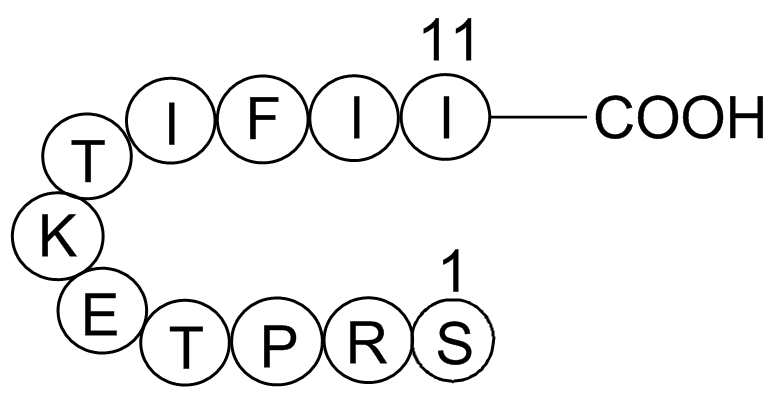Gap 27 (Synonyms: Ser-Arg-Pro-Thr-Glu-Lys-Thr-Ile-Phe-Ile-Ile ) |
| Katalog-Nr.GP10119 |
A connexin-mimetic peptide
Products are for research use only. Not for human use. We do not sell to patients.

Cas No.: 198284-64-9
Sample solution is provided at 25 µL, 10mM.
Gap 27 is a peptide(Ser-Arg-Pro-Thr-Glu-Lys-Thr-Ile-Phe-Ile-Ile) derived from connexin 43 that is a selective gap junction blocker.
Connexins, or gap junctions, are a family of structurally-related transmembrane proteins. Gap junctions contain channels that allow the passage of ions and small molecules between adjacent cells. This intercellular communication has been implicated in the coordination of cellular responses to intracellular signaling molecules. Calcium and inositol phosphates are among the second messengers that can pass through gap junction channels. This synthetic connexin-mimetic peptide, Gap 27, was used to evaluate the contribution of gap-junctional communication to osteoclastic bone resorption. It was concluded that gap-junctional communication is necessary for proper bone remodeling.
Referenceㄩ
1. Berthoud, V. et al. Am. J. Physiol. Lung Cell Mol. Physiol. 279, 619 (2000)
2. Ilvesaro, J. et al. BMC Musculoskel. Disord. 2, 10 (2001)
3. Chaytor, A. et al. Brit. J. Pharmacol. 144, 108 (2005)
4. Boitano, S. and H. Evans Am. J. Physio.l Lung Cell Mol. Physiol. 279, L623 ( 2000).
Average Rating: 5 (Based on Reviews and 30 reference(s) in Google Scholar.)
GLPBIO products are for RESEARCH USE ONLY. Please make sure your review or question is research based.
Required fields are marked with *




